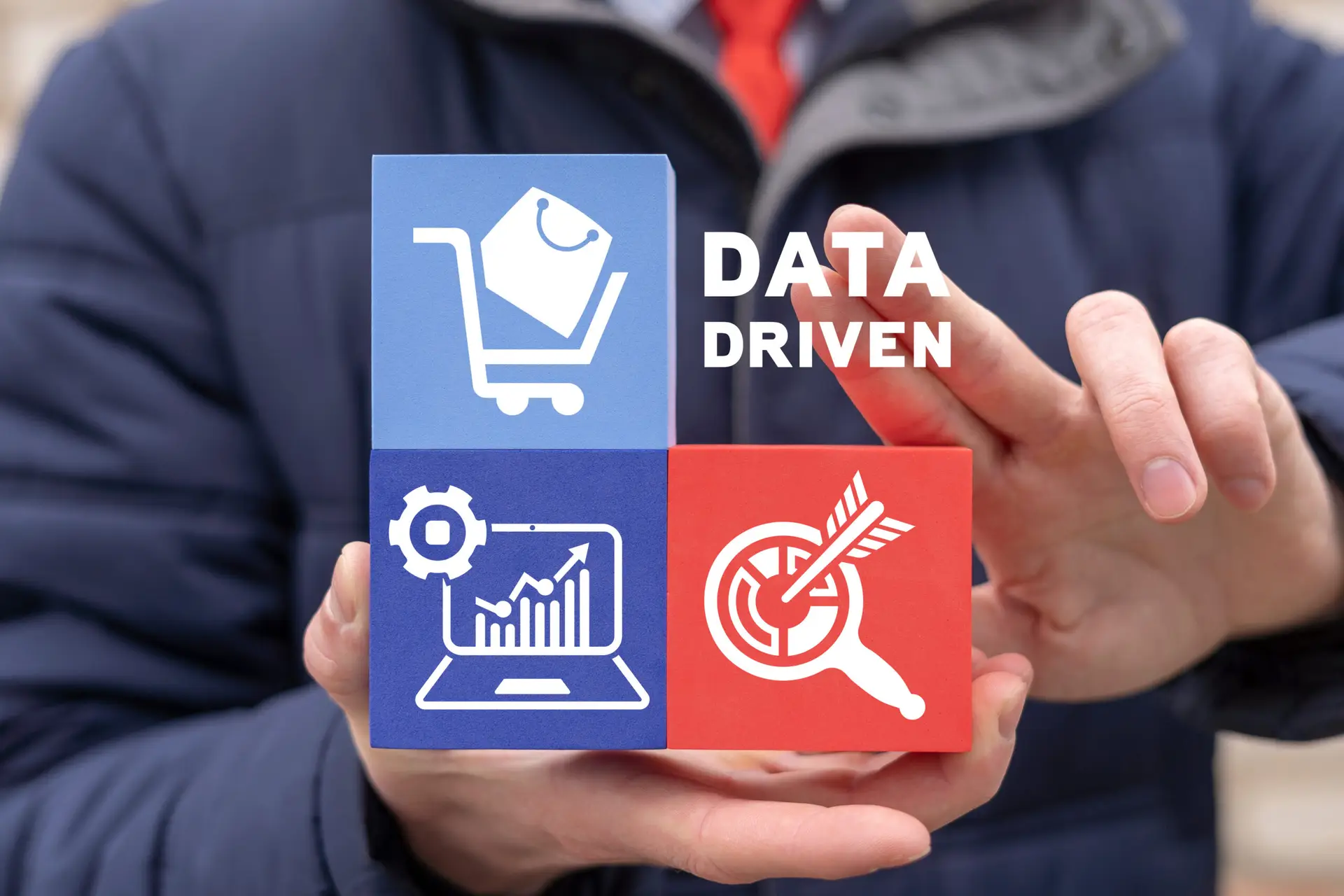
4 Helpful Data-Driven Marketing Strategies
What is a Data-Driven Marketing Culture?
A data-driven marketing culture is an organizational approach where decisions, strategies, and campaigns are guided by data insights rather than intuition or traditional methods. It involves embedding data at the core of marketing processes, ensuring that every decision is informed by accurate, measurable, and actionable information. This culture prioritizes evidence-based decision-making, leveraging analytics to understand customer behavior, optimize campaigns, and predict future trends.
Unlike traditional marketing strategies, which often rely on gut feelings, past experiences, or broad assumptions, a data-driven approach emphasizes precision and accountability. For example, instead of launching a campaign based on what “feels right,” marketers in a data-driven culture analyze customer demographics, behavior patterns, and engagement metrics to craft targeted, effective campaigns. This shift not only reduces guesswork but also ensures that marketing efforts align with business objectives and customer needs.
The importance of integrating data into decision-making cannot be overstated. In today’s hyper-competitive landscape, businesses that fail to harness the power of data risk falling behind. Data-driven marketing enables organizations to stay agile, adapt to changing market conditions, and deliver personalized experiences that resonate with their audience. Ultimately, it’s about transforming marketing from an art into a science—one that drives measurable results and long-term growth.
Table of Contents
The Benefits of Embracing a Data-Driven Marketing Culture
Adopting a data-driven marketing culture offers benefits that enhance a company’s performance and competitive edge. By using data to identify what works, marketers can allocate resources more effectively, ensuring every dollar contributes to measurable outcomes. Analyzing campaign performance data reveals which channels deliver the highest conversion rates, allowing businesses to focus their efforts where they matter most.
Another key benefit is the ability to gain deeper customer insights. Data-driven marketing provides a 360-degree view of the customer, encompassing their preferences, behaviors, and pain points. This understanding enables businesses to create highly personalized experiences, from tailored email campaigns to product recommendations that feel uniquely relevant. Personalization, in turn, fosters stronger customer relationships and loyalty.
Data-driven marketing also enhances campaign performance by enabling real-time optimization. With access to live data, marketers can adjust strategies on the fly, whether it’s tweaking ad copy, reallocating budgets, or targeting a different audience segment. This agility is crucial in today’s fast-paced digital environment, where trends and consumer behaviors can shift overnight.
Companies like Amazon and Netflix exemplify the power of data-driven marketing. Amazon’s recommendation engine, which accounts for a significant portion of its sales, is a testament to the effectiveness of leveraging customer data. Similarly, Netflix uses data to predict viewer preferences, ensuring that its content offerings keep subscribers engaged. These success stories highlight how a data-driven approach can drive innovation, customer satisfaction, and profitability.
Key Components of a Data-Driven Marketing Culture
Data Collection and Management
The foundation of any data-driven marketing culture is robust data collection and management. Accurate and relevant data is the lifeblood of informed decision-making. Businesses must invest in systems that capture data from various touchpoints, including websites, social media, email campaigns, and customer interactions. Equally important is ensuring that this data is stored securely and organized in a way that makes it easily accessible for analysis.
Analytics and Insights
Collecting data is only the first step; the real value lies in analyzing it to extract actionable insights. Advanced analytics tools and platforms, such as Google Analytics, Tableau, and HubSpot, enable marketers to identify patterns, trends, and opportunities. For example, predictive analytics can forecast future customer behaviors, while sentiment analysis can gauge public perception of a brand. These insights empower marketers to make data-backed decisions that drive results.
Collaboration Across Teams
A data-driven marketing culture thrives on collaboration. Breaking down silos between departments—such as marketing, sales, and customer service—ensures that data is shared and utilized effectively across the organization. For instance, insights from the sales team can inform marketing strategies, while customer service data can highlight areas for improvement in the customer journey. Cross-functional collaboration fosters a unified approach to achieving business goals.
Customer-Centric Approach
At its core, a data-driven marketing culture is customer-centric. By leveraging data to understand customer needs, preferences, and pain points, businesses can create experiences that truly resonate. This approach not only enhances customer satisfaction but also drives loyalty and advocacy. For example, a retailer might use purchase history data to send personalized product recommendations, creating a seamless and engaging shopping experience.
Steps to Build a Data-Driven Marketing Culture
Step 1: Establish Clear Goals and KPIs
The journey to a data-driven marketing culture begins with setting clear, measurable goals. These objectives should align with broader business goals and be accompanied by key performance indicators (KPIs) to track progress. For example, a goal to increase website traffic might be measured by metrics such as unique visitors, bounce rate, and time on site. Defining these benchmarks ensures that everyone in the organization understands what success looks like.
Step 2: Invest in the Right Tools and Technology
To harness the power of data, businesses must invest in the right tools and technology. Essential platforms include customer relationship management (CRM) systems, analytics tools, and marketing automation software. Additionally, emerging technologies like artificial intelligence (AI) and machine learning can take data-driven marketing to the next level. For instance, AI-powered chatbots can provide personalized customer support, while machine learning algorithms can optimize ad targeting.
Step 3: Foster a Data-First Mindset Across Teams
Building a data-driven culture requires a shift in mindset. Employees at all levels must embrace the value of data and be equipped with the skills to use it effectively. This can be achieved through training programs, workshops, and ongoing education. Leadership buy-in is also critical; when executives champion data-driven initiatives, it sets the tone for the entire organization.
Step 4: Ensure Data Quality and Compliance
Data is only as valuable as it is accurate. Businesses must prioritize data quality by implementing processes to clean and validate their datasets. Additionally, compliance with data privacy regulations, such as GDPR and CCPA, is non-negotiable. Adhering to these standards not only protects customer trust but also mitigates legal risks.
Overcoming Challenges in Adopting a Data-Driven Marketing Culture
Transitioning to a data-driven marketing culture is not without its challenges. Resistance to change is a common hurdle, as employees may be skeptical of new processes or fear that data will replace their expertise. To address this, organizations should communicate the benefits of data-driven marketing and involve employees in the transition process.
Data silos are another obstacle, as fragmented data can hinder a unified view of the customer. Integrating data across departments and systems is essential for overcoming this challenge. Similarly, skill gaps in data literacy and technical expertise can be addressed through targeted training and hiring.
Finally, data overload can overwhelm teams, making it difficult to focus on actionable insights. Businesses should prioritize quality over quantity, identifying the metrics that matter most to their goals.
Measuring the Success of a Data-Driven Marketing Culture
The effectiveness of a data-driven marketing culture can be measured through key metrics such as ROI, customer acquisition cost (CAC), and customer lifetime value (CLV). Regularly reviewing these metrics allows businesses to identify areas for improvement and refine their strategies. Continuous iteration is key; the more a company learns from its data, the more effective its marketing efforts become.
Future Trends in Data-Driven Marketing
The future of data-driven marketing is shaped by emerging trends such as predictive analytics, personalization at scale, and real-time data usage. AI and machine learning will play an increasingly central role, enabling marketers to anticipate customer needs and deliver hyper-relevant experiences. However, as data usage grows, so does the need for ethical practices and transparency. Businesses must prioritize responsible data usage to maintain customer trust.
Case Studies: Companies Excelling in Data-Driven Marketing
Companies like Spotify and Coca-Cola have successfully embraced data-driven marketing. Spotify’s personalized playlists, such as Discover Weekly, are powered by data insights, creating a unique user experience. Coca-Cola uses data to optimize its advertising campaigns, ensuring that its messaging resonates with target audiences. These examples demonstrate the transformative potential of a data-driven approach.
Actionable Tips to Get Started Today
To begin building a data-driven marketing culture, start by defining clear goals and KPIs. Invest in tools that align with your needs, and prioritize training to foster a data-first mindset. Focus on collecting high-quality data and ensure compliance with privacy regulations. Remember, it’s a journey—start small, learn from your data, and scale your efforts over time.






